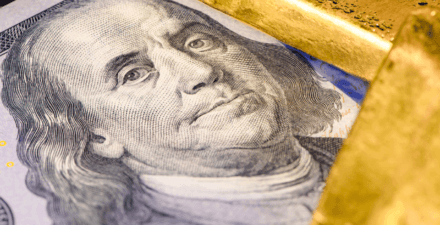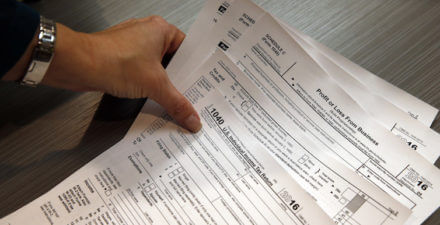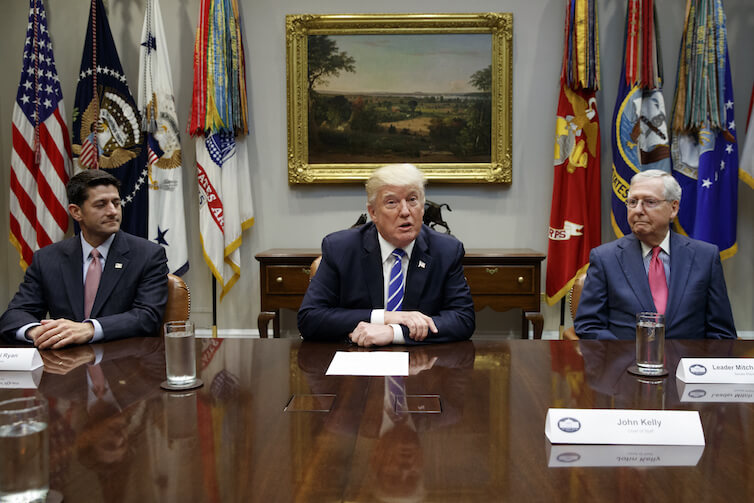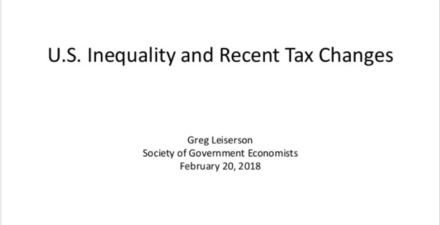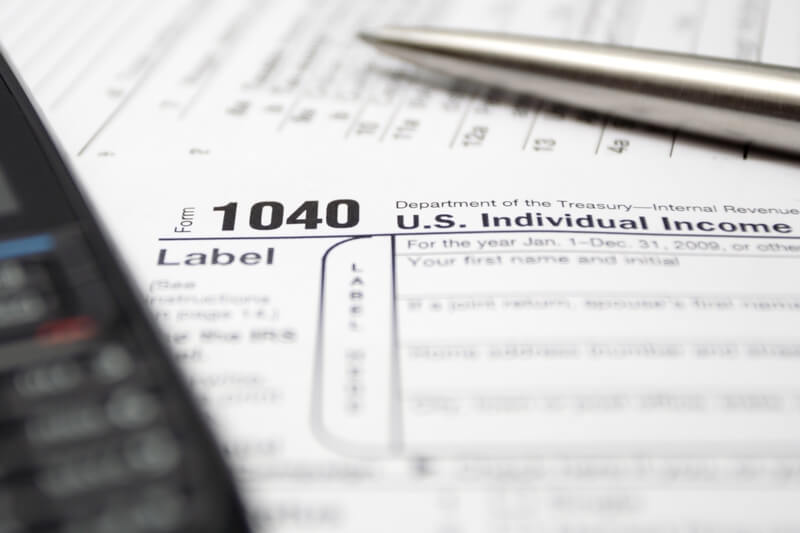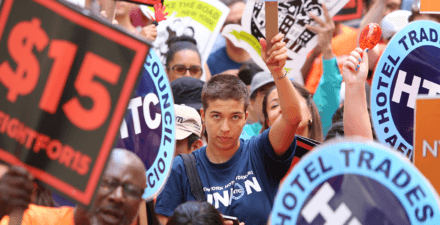Determining the optimal U.S. tax rate for higher earners
There are two constants in life: death and arguments about the optimal top marginal tax rate. The proper level of income taxation in the United States has been a hotly contested topic since the creation of the first federal income tax more than a century ago. The debate over the optimal tax rate has only intensified in recent years, as income and wealth inequality in the United States increases while taxes on the rich decline. Policymakers need an empirical answer to the question of the optimal level of taxation on top incomes.
How exactly do economists calculate an optimal level? Until very recently, economic research sought to determine the optimal rate by using just one concept—the highest tax rate that would maximize the amount of revenue collected, bearing in mind the disincentive to work created by taxation. Yet the most cutting-edge evidence tells us that our current estimates of the optimal tax rate are inaccurate because they’re missing important additional pieces of information about the behavioral response to taxes.
View full PDF here alongside all endnotes
So what is the optimal tax rate for top incomes? In order to determine that rate, policymakers should instead consider the following three ways that top earners might respond to tax changes:
- by varying the supply of their own labor (working less)
- by shifting between different types of income (wages and capital) to avoid taxes
- by bargaining for different compensation levels from their employers
In this brief, we examine these three possible responses to higher taxes among the wealthy—responses that economists call elasticities—as posited by economists Thomas Piketty of the Paris School of Economics, Emmanuel Saez at the University of California-Berkeley, and Stefanie Stantcheva of Harvard University. Cutting to the chase, the three authors find that the optimal rate of taxation is much higher when we consider the responses quantified by three different elasticities as compared to one elasticity.
The analysis by Piketty, Saez, and Stantcheva finds that the optimal top tax rate is 83 percent. In contrast, the optimal rate using only one elasticity is 57 percent, which in turn compares to the current higher marginal tax in the United States of 39.6 percent. While 83 percent seems like a very high number, the underlying analysis of the paper is persuasive. Yet, the real take-away is the way the three authors calculate the much higher tax rate, and the importance of top earners bargaining for their compensation in calculating the optimal rate. U.S. policymakers need to understand the more complex responses of high earners to different tax rates. This new understanding is important given the country’s rising economic inequality and the relationship this rising inequality has to economic growth.
What is an elasticity?
Economists often seek to examine how responsive one economic variable will be to a change in another: What is known as an elasticity. Often they’ll explore the elasticity of Variable A to Variable B, such as the elasticity of employment to changes in the minimum wage or the elasticity of work hours to increases in the marginal tax rate. The resulting calculation of that elasticity would tell you how responsive the one variable is to changes in another. The larger the magnitude of the number, the larger the change.
In the case of the employment and the minimum wage, think of an elasticity of -0.1. This would mean a 10 percent increase in the minimum wage would result in a 1 percent decline in the level of employment. Or consider the elasticity of work hours to increases in the marginal tax rate, which economists calculate at -0.2—meaning a 10 percent increase in the marginal tax rate would result in a 2 percent decline in hours worked.
Obviously, many variables are at play in the complex U.S. economy. This is why factoring in other elasticities is important for economists to explore and for policymakers to understand.
A new approach to the problem
In their paper “Optimal Taxation of Top Labor Incomes: A Tale of Three Elasticities,” economists Piketty, Saez, and Stantcheva overturn conventional wisdom on optimal taxation by introducing empirical tests of three key ways that taxes can affect the behavior of top earners. The authors argue that the optimal tax rate for top earners isn’t the result of just one kind of response to taxation, but rather three different kind of behavioral responses, or three elasticities.
When the authors calculate the optimal tax rate using only the criteria that the rate not reduce the amount of time top earners spend working, they find that the optimal top tax rate would be 57 percent. But the authors argue that using just one elasticity misses out on too much that’s going on with the behavior of top earners when tax rates are changed. Instead, we should consider three elasticities.
Elasticity 1: Labor supply response
The labor supply of top earners is economic parlance for the amount of time wealthy individuals will put into work instead of leisure. To find the elasticity of their working hours to the tax rate they pay, the authors first calculate the “supply side” elasticity, which measures the sensitivity of the labor supply of top earners to changes in the top tax rate. As the tax rate increases, individuals start to re-evaluate the trade-off between working and earning more money and not working and enjoying leisure time. If top earners were to stop working then the reduction in the labor supply would not only reduce the amount of taxes collected but, more importantly, could be harmful to economic growth.
That’s why policymakers need to know how responsive to taxation top earners are when it comes to their willingness to work. If they are very responsive, then the optimal tax rate could be lower, all other things being equal. If they are less responsive, the rate could be higher.
The authors calculate this first elasticity by looking at how both the share of income going to top earners in the United States, and U.S. economic output (measured by gross domestic product per person) changed as the top tax rate changed. They find that as the top tax rate went down between 1960 and the end of 2012 the top 1 percent of earners were able to keep more of their income but the growth of GDP per capita didn’t increase. That means this first elasticity is pretty low, at most 0.2.
In short, top earners do not substantially vary their labor supply in response to tax rates.
Elasticity 2: Tax avoidance
Another way that top earners can respond to taxation is to change the kind of income they receive so that they can avoid a higher tax rate. If the tax rate on labor income increases then top earners might shift their income toward capital income that is taxed differently. A chief executive officer at a big corporation, for example, might get his compensation shifted from purely salary to include stock options, which when exercised are treated as capital income. This doesn’t mean the top earners are changing their behavior. Rather they are trying to shelter their money from taxation.
A higher elasticity, or responsiveness, means that an increase in the tax rate would make the earner very likely to change the kind of income they earn. A low elasticity means that an earner would not change her source of income based on changes in the tax rate. In a situation where this elasticity is high, top earners will simply shift all their income away from labor and toward capital—so a high tax on the labor income of top earners would yield little revenue.
To calculate this elasticity, the authors compare the trends in the share of labor income going to the top 1 percent to the trends in the share of income that includes capital gains. What they find is that the trends of the two data series are nearly identical. In fact, Piketty, Saez, and Stantcheva say their estimate for the second elasticity is 0. Top earners in the United States do not tend to shift their income sources in response to changes in the tax rates.
Elasticity 3: Executive compensation bargaining
Many top earners are corporate executives. According to one estimate, 41 percent of the top 0.1 percent of income earners are executives, managers, or supervisors. A growing body of research demonstrates that corporate CEOs and other members of the corporate “C suite” (chief financial officers, chief information officers, chief operating officers, and the like) are not responsible for all the gains in the company’s economic performance for which they are compensated. In other words, a substantial share of top corporate executives’ earnings are comprised of funds from the firm that might otherwise go to other workers, investments in the firm, or to shareholders.
When tax rates are lower, executives have a stronger incentive to bargain for higher compensation. And since this compensation isn’t necessarily due to higher productivity, the struggle is zero-sum—if executives receive compensation for productivity gains they aren’t responsible for then funds that would go toward other ends get diverted. Piketty, Saez, and Stantcheva explain that a higher elasticity means that executives are more likely to bargain for higher pay when tax rates are lower and therefore receive funds that might go elsewhere within the firm.
In order to calculate this elasticity, the economists look at international data to determine the relationship between top tax rates and CEO pay. The data show that in countries with lower tax rates, CEOs have higher average incomes after accounting for the kinds of industries in which their companies compete. Piketty, Saez, and Stantcheva interpret this finding as the sign of a high third elasticity, which they calculate conservatively at 0.3 at the lowest. This would mean a higher tax rate on top earners would reduce what economists call rent-seeking—the taking of undue compensation—within the firm, potentially increasing wages for average workers.
Conclusion: The optimal rate?
The research presented in “Optimal Taxation of Top Labor Incomes: A Tale of Three Elasticities,” by economists Piketty, Saez, and Stantcheva, suggests that the conventional wisdom around optimal taxation rates for top earners is missing some nuance in how top earners respond to taxation. Including the bigger picture would seem to leave substantial room for an increase in rates on top earners. Piketty, Saez, and Stantcheva’s calculate that the optimal top tax rate comes out to 83 percent, once their three elasticities—labor supply, tax avoidance, and bargaining—are combined.
Compare that result to the result of 57 percent when economists only consider the overall elasticity of income to tax rates. This level is also much higher than the current top federal income tax rate of 39.6. This isn’t to say that our current top tax bracket should be raised to 83 percent tomorrow. Rather, this is the optimal rate for those at the very top of the income ladder. The top tax bracket would have to be changed in order to tax only those individuals or households at the very tippy top at this new 83 percent rate.
The results of this research also indicate that the rise in income inequality at the very top of the income spectrum was driven primarily by the decline in tax rates, which allowed top earners to get higher incomes without increasing the pace of economic growth. So the main take-away from latest research is clear: Tax rates in the United States on incomes at the very top could be much higher without affecting output growth and potentially boost wages for average workers.

